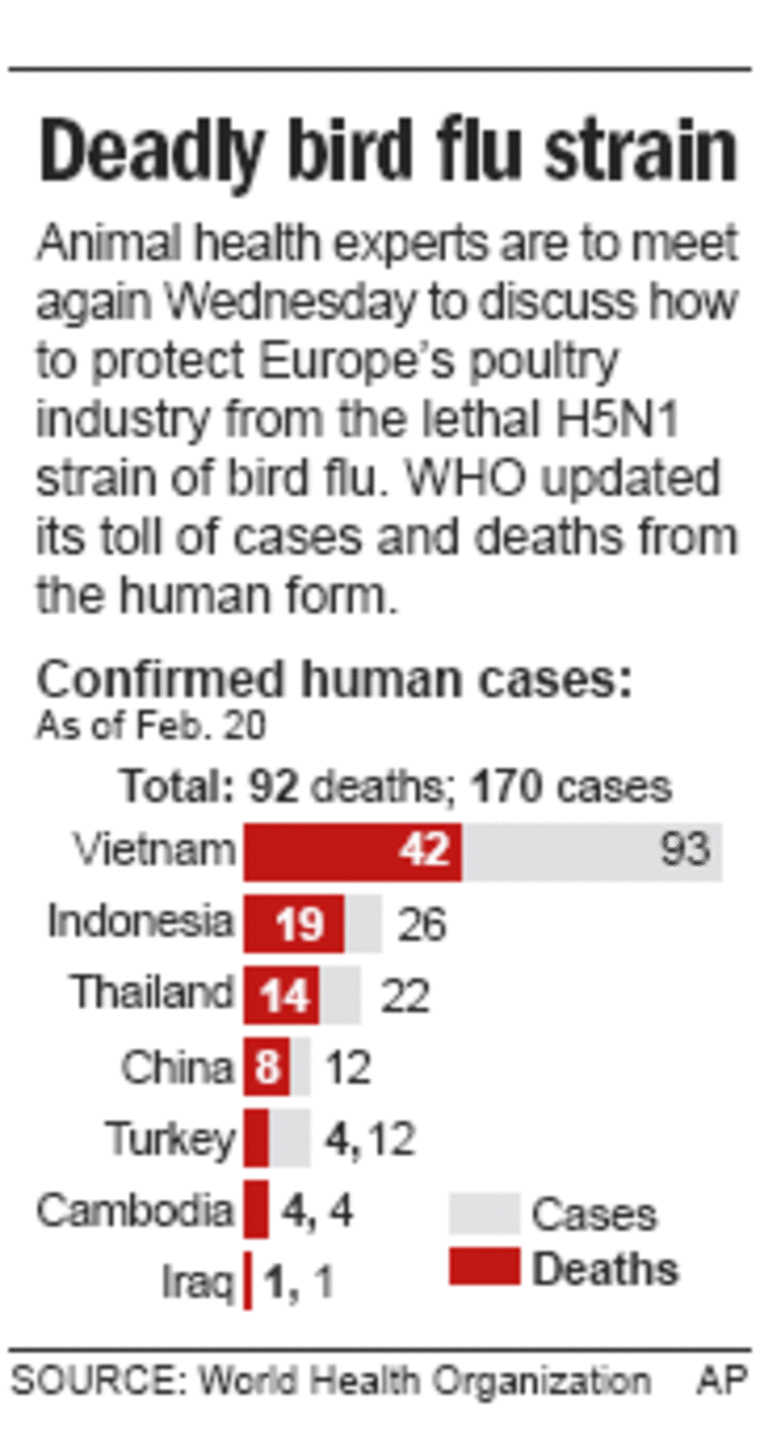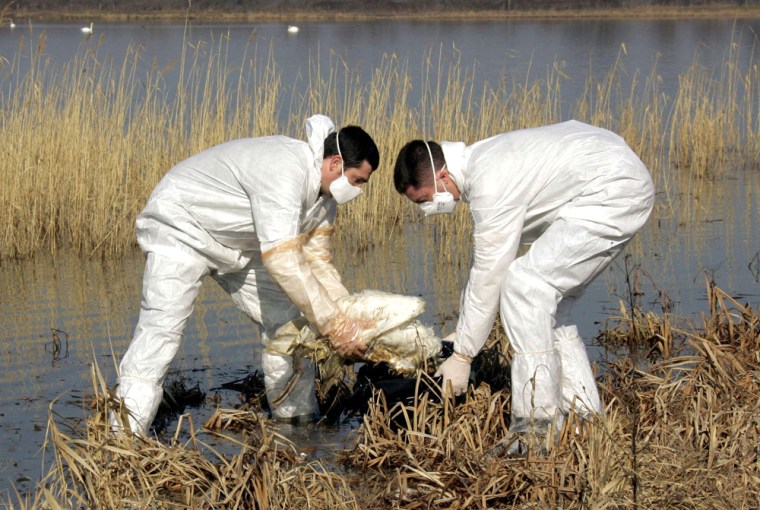The unprecedented spread of bird flu to 14 more countries in the past three weeks brings the disease closer to millions of people, giving it many more chances to mutate into a global outbreak, international health experts said Tuesday.
Fourteen countries — from India to Nigeria and Egypt to France — have reported their first cases of birds infected with the deadly H5N1 strain of bird flu since the beginning of February, the World Health Organization said.
“We’ve never seen so many outbreaks of the same virus in so many different regions,” WHO spokeswoman Maria Cheng told The Associated Press. “Our concern obviously is that humans could potentially come into contact with birds infected with H5N1, which would mean populations worldwide are potentially at risk.”
WHO says it remains difficult for humans to catch H5N1. The agency has confirmed 170 human cases, including 92 deaths, since 2003 — mostly in east Asia. But WHO experts fear that the virus could mutate into a form that is easily transmitted from person to person and set off a flu pandemic.
Many of the recent outbreaks were in Europe, where wild birds have tested positive for the disease. Tests confirmed Tuesday that three dead swans found in Hungary were infected with the H5N1 strain, making it the seventh European Union nation to confirm the disease in birds.
The 1,000-year-old Tower of London moved its famous six ravens inside for protection. Britain so far has been spared, but wardens were taking no chances — legend holds that the British monarchy will fall if the ravens ever leave the Tower.
“It’s purely precautionary,” Derrick Coyle, the tower’s Yeoman Raven Master, said Tuesday.
The zoo at Paris’ Jardin des Plantes also closed its aviary on Tuesday and another on the city’s outskirts took measures to keep its flamingos from mixing with wild ducks.
But poultry cases in India, Egypt and Nigeria are causing international health authorities more concern because of the close contact chickens and other domestic fowl can have with people who keep them around their homes, increasing the chance of the disease jumping the species barrier.
“At the moment we don’t have very good information about how extensive these outbreaks are,” said Cheng.
No human cases yet in Europe
So far, she noted, there have no human cases reported in those countries or Nigeria nor in Western Europe.
In western India’s Navapur district, where nearly 800,000 birds are to be killed following an outbreak of H5N1 in poultry, farmers distraught over their losses asked how they would survive.
“It is a question of livelihood for 5,000 families,” said Ghulam Vhora, a member of a Navapur poultry farmers association, after his 30,000 birds were killed. “We are all jobless.”
WHO said the 14 countries that have had outbreaks since the beginning of February — in order of reporting — are Iraq, Nigeria, Azerbaijan, Bulgaria, Greece, Italy, Slovenia, Iran, Austria, Germany, Egypt, India, France, and Hungary.

Indonesia, which has had 26 human cases since July, including 19 deaths, is also a primary concern because of the high infection rates among birds and people.
“The more chances H5N1 has to infect people, the more chances it has to evolve into a form that could spark a pandemic,” Cheng said. “And the place we’re seeing the most human infections right now is Indonesia.”
Juan Lubroth, head of the infectious disease group at the U.N.’s Rome-based Food and Agriculture Organization, said he was concerned about outbreaks in Africa, but “I do not want to lose focus on the situation that we have in Indonesia. There is a national strategy in Indonesia. Now we just have to implement it.”
Vietnam has the highest number of confirmed human cases of H5N1 since 2003, with 93 people infected and 42 deaths, but none of Vietnam’s cases have been this year.
Even though Nigeria and Egypt — the two most populous countries in Africa — have reported no human cases, people might still be infected there, said Dick Thompson, another WHO spokesman. Sometimes initial tests come back negative for H5N1, and the tests have to be redone to make sure the disease is really absent.
“As long as the virus is circulating, it could jump into humans,” he added.
Maria Zampaglione, spokeswoman for the Paris-based World Organization for Animal Health, said one reason that so many outbreaks were being reported is because of increased global awareness.
“It is certainly not the first time that these wild birds are crossing countries,” she said. “Now it is so crucial and they are monitored so well that every single case is investigated.”
